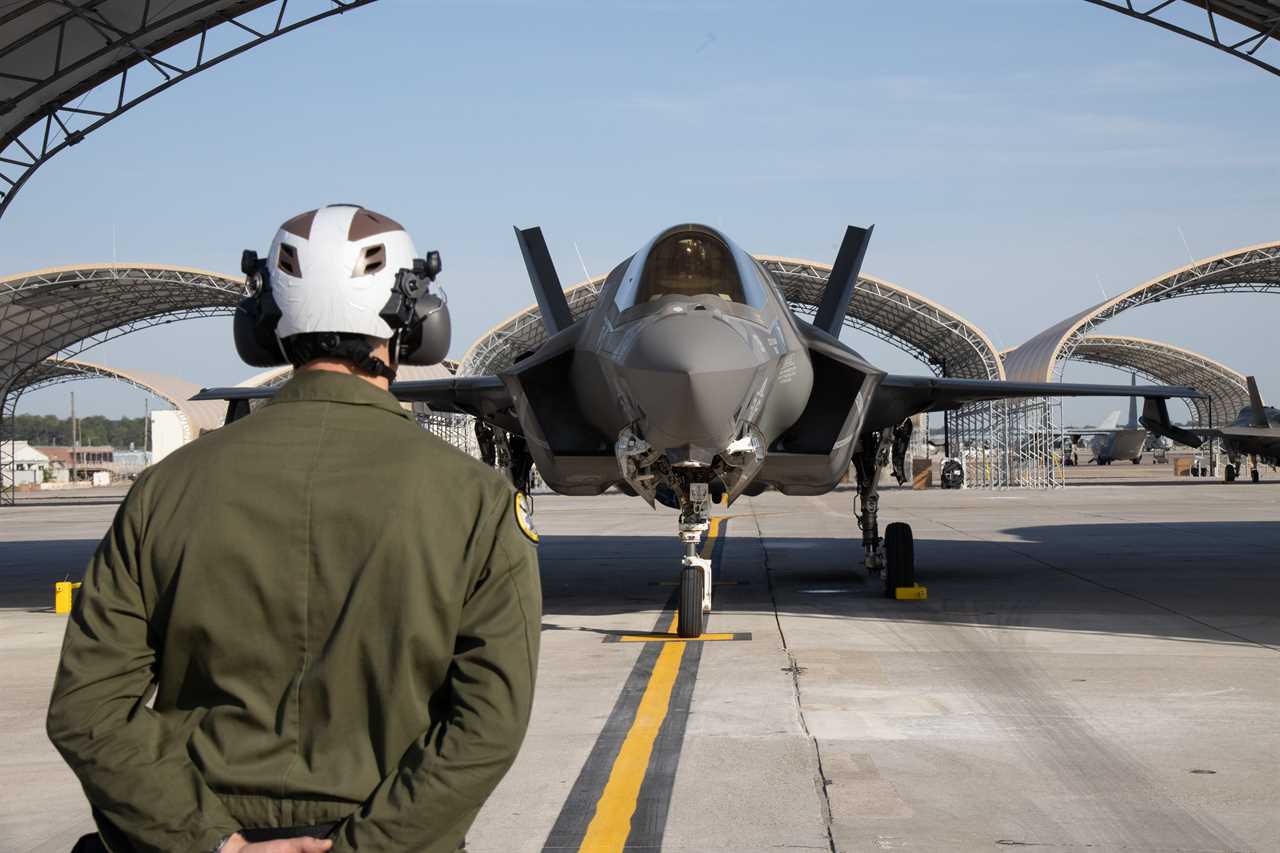Nick Ut/Getty Images
- A variant of the F-35 fighter jet can now fly in lightning after years of restrictions.
- DoD attributed the change to progress in keeping the jet safe and functioning if struck by lightning.
- Lightning has long been a major — and ironic — issue for the F-35, nicknamed the Lightning II.
After years of restrictions designed to prevent a catastrophe, the most widely used version of the F-35 Joint Strike Fighter, nicknamed the Lightning II, is finally being allowed to fly in lightning, with which it has ironically had serious problems.
The progress comes after a lot of tinkering with the F-35A's lightning protection system, which had several issues that forced the Department of Defense to prohibit the jet from flying anywhere near bad weather.
"The formal lifting of the F-35A lightning standoff restriction was released on March 19," F-35 Joint Program Office spokesperson Russell Goemaere told Business Insider. News of this change was first reported by Breaking Defense on Monday.
The restriction, which had prohibited the F-35A, the conventional takeoff and landing variant, from flying within 25 miles of lightning since June 2020, was lifted after a major fix to the aircraft's On-Board Inert Gas Generation System, or OBIGGS. Goemaere said the fix included a "more robust" OBIGGS hardware design, as well as software updates.
The OBIGGS is designed to replace combustible gas in the jet's fuel tank, such as oxygen, with material, in this case nitrogen-enriched air, that won't ignite or explode. Protection systems are intended to prevent lightning from frying the aircraft's systems, starting an onboard fire, or, in the obvious worst case, a catastrophic explosion.
"Testing for these efforts was a combination of lab and flight testing," Goemaere added, noting "the fix restores operational capability, while providing additional safety for the pilots and aircraft." He declined to go into specific detail or the number of aircraft modified or in the modification process "due to operational security concerns."

US Marine Corps/Staff Sgt. Theodore Bergan
While problems with the F-35's fuel tank inerting system have been trouble in recent years, the DoD has been grappling with these issues since at least 2009, as was highlighted in an operational test and evaluation report a few years later.
The 2012 report said "tests of the fuel tank inerting system in 2009 identified deficiencies in maintaining the required lower fuel tank oxygen levels to prevent fuel tank explosions."
"The system, " according to the report, "is not able to maintain fuel tank inerting through some critical portions of a simulated mission profile. The program is redesigning the On-Board Inert Gas Generating System (OBIGGS) to provide the required levels of protection from threat and from fuel tank explosions induced by lightning."
Later reports indicated that the F-35, a staggeringly expensive program that has had to overcome a number of problems, had made progress on the issue following a rework. Flying restrictions were lifted in 2014.
But then, in 2020, additional problems were discovered. The aim was that the restrictions could be lifted in 2022, but more deficiencies were found at that time.
The other two variants of this jet, the F-35B short takeoff and vertical landing variant and F-35C carrier-based fighter, haven't had the exact same issues with lightning, but there have been problems with the jets.
Talking about the latest fix to the advanced fifth-generation stealth fighter, Goemaere said the credit goes to the "government and industry engineers who applied technical rigor, conducted analysis, and drove data driven decision-making to overcome the challenges that were identified in 2022."
Read More
By: [email protected] (Chris Panella)
Title: F-35 Lightning II fighter jets can finally fly in lightning after years of dodging storms
Sourced From: www.businessinsider.com/f35-lightning-jet-can-fly-lightning-storms-after-issues-2024-4
Published Date: Tue, 02 Apr 2024 20:14:19 +0000
.png)





